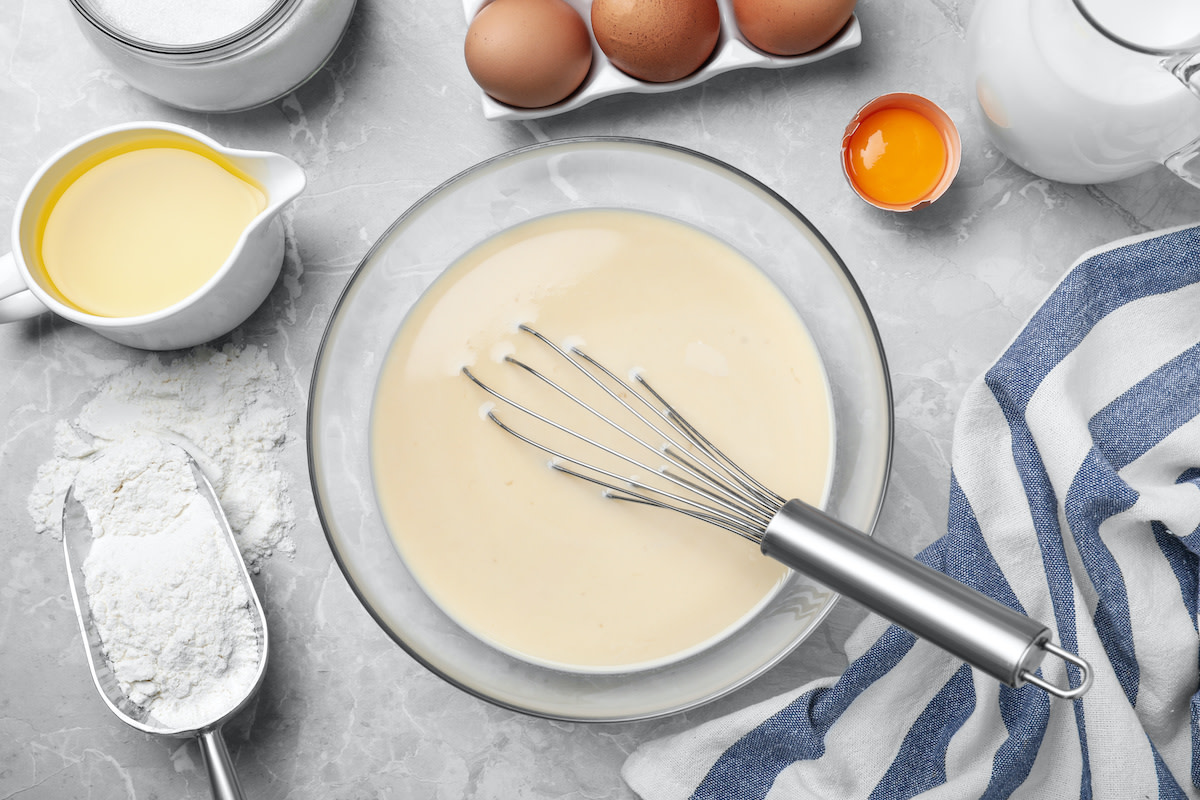How to Choose the Right Whisk: 9 Types of Whisks
Written by MasterClass
Last updated: Jun 7, 2021 • 4 min read
The whisk is an essential kitchen tool that comes in a surprising array of styles. Here’s how to find the best whisk for your cooking task.
Learn From the Best
What Is Whisking?
Whisking is a cooking technique that involves the continuous movement of a whisk through a liquid to aerate or incorporate multiple ingredients. Variations of a modern whisk, a long-handled tool with a series of thin metal wires, have been around since the seventeenth century, where cooks crafted whisks from bundles of twigs to whip eggs into a frothy cream. The modern whisk was invented in the mid-nineteenth century, but its glory would be short-lived. A few years later, the first mechanized whisk was patented by Ralph Collier in 1856, and the advent of hand mixers and stand mixers soon followed. Whisking by hand remains a great method for simple tasks like mixing pancake batter and beating eggs for an omelet.
9 Different Types of Whisks
High-quality whisks come in many shapes and sizes. Here are some of the most common you'll encounter and the best uses for each:
- 1. Balloon whisk: Balloon whisks are named after their bulbous shape. Large, with just a few metal tines, balloon whisks are good for whisking custards, incorporating dry ingredients, and making thick batters in large mixing bowls. The balloon whisk is a typical, everyday whisk.
- 2. French whisk: French whisks are narrower than balloon whisks, which allows the thin, stiff wires to get into the corners of a small saucepan when making béchamel, hollandaise, or any of the classic French sauces. An extra layer of tines helps aerate egg whites.
- 3. Ball whisk: Instead of wire loops, this type of whisk has small spheres at the ends of the wires. Ball whisks are useful for reaching the edges of narrow containers, like measuring cups.
- 4. Flat whisk: The flat whisk, also known as the roux whisk, looks like a flattened balloon whisk. This whisk is great for shallow pans since you can angle the whisk’s handle closer to the edge of the pan. Use this whisk for any type of pan sauce, gravy, or roux-based sauce. This whisk also doubles as a slotted spoon. Learn how to make a simple pan sauce here.
- 5. Spring whisk: Spring whisks, also known as twirl whisks, feature a spring at the end of the handle that’s designed to be bounced up and down, rather than swished side to side, to beat eggs.
- 6. Danish visk: Also known as a dough whisk, the Danish visk features a series of wire loops at the end of a wooden handle. Unlike other whisks, Danish dough whisks are not used for aeration—they incorporate dough or batter ingredients with minimal overworking.
- 7. Mini whisk: A mini whisk may seem like a novelty item, but this baby-sized version of a typical balloon whisk can be incredibly handy for emulsifying a small amount of vinaigrette or beating one or two eggs.
- 8. Kettle whisk: A kettle whisk, also known as a kettle whip, is a whisk with a very long handle and a caged ball shape at the end. Kettle whisks are used in commercial kitchens to make sauces in large pots, like kettles or stockpots.
- 9. Spiral whisk: Also known as a coil whisk or a Scandinavian whisk, this type of whisk features a C shape of coiled wire at the end of the handle. Spiral whisks are great for making gravies and sauces since the coils scrape the pan’s bottom and sides.
How to Choose the Right Whisk
Whisking by hand is hard work, so it’s important to choose the right type of whisk for your cooking task. Here are some factors to consider when selecting a whisk:
- 1. Consider the material: Most high-quality whisks are made of stainless steel, a durable and dishwasher-safe material. The only downside to stainless steel is that it can scratch nonstick cookware. If you prefer to make your sauces in a nonstick pan, a silicone whisk is a good option. However, silicone whisks tend to be less powerful than their all-metal counterparts so it will require more energy to use.
- 2. Test it before purchase: If you are shopping for a whisk at your local retailer or restaurant supply store, you should test it to decide if it’s the right fit. Select the whisk of your choice and test it out to determine if the whisk handle is the right fit for your hand, a reasonable weight, and easy to maneuver.
- 3. Choose the right handle length: Using a long-handled whisk can help protect your hands from heat when whisking ingredients over the stove, but they can tip over the edge of smaller bowls and pots. If you tend to mix things in smaller bowls, choose a whisk with a shorter handle.
- 4. Look at the number of wires: When it comes to wire whisks, more wires equals more bubbles, making balloon and French whisks the best tool for whipping egg whites or cream. When incorporating thick batters, ingredients tend to get stuck between the tines, so select a balloon whisk with fewer tines or a Danish dough whisk to perform this task.
Learn More
Get the MasterClass Annual Membership for exclusive access to video lessons taught by masters, including Dominique Ansel, Chef Thomas Keller, Gordon Ramsay, Gabriela Cámara, Yotam Ottolenghi, and more.
